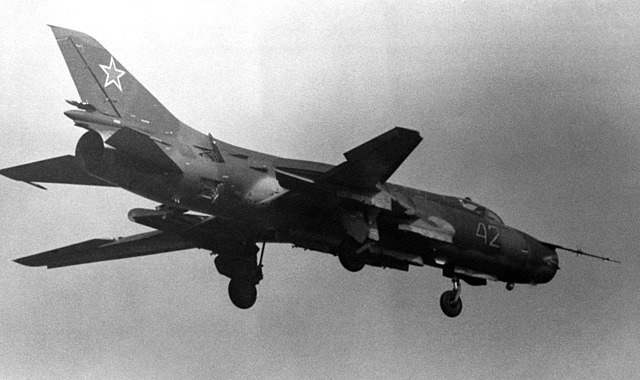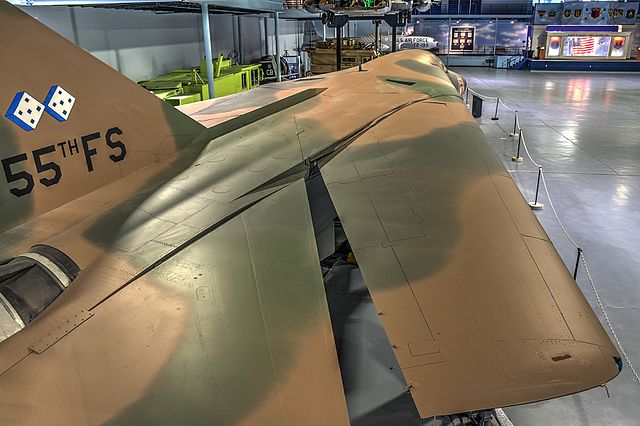The Sukhoi Su-17 is a variable-sweep wing fighter-bomber developed for the Soviet military. Developed from the Sukhoi Su-7, the Su-17 was the first variable-sweep wing aircraft to enter Soviet service and featured updated avionics. The aircraft also has variants which were designed to be exported to non-Soviet states such as the Sukhoi Su-22 and the less popular Su-20.
Sukhoi Su-17
An Su-20 (left) next to an older, similar Su-7BKL.
A Soviet Su-17M.
Iraqi Su-22M aircraft in a hangar damaged by Coalition air strikes during Operation Desert Storm.
A variable-sweep wing, colloquially known as a "swing wing", is an airplane wing, or set of wings, that may be swept back and then returned to its original straight position during flight. It allows the aircraft's shape to be modified in flight, and is therefore an example of a variable-geometry aircraft.
Two Dassault Mirage G prototypes, the upper one with wings swept
A Grumman F-14 Tomcat testing an unusual asymmetric wing configuration, a possible in-flight failure case, showing one wing at minimum sweep and one at maximum sweep
The F-111 was the first variable-sweep wing aircraft to be put into production. Shown are three Australian F-111s.
F-111E on display at the Museum of Aviation, Robins AFB, United States








